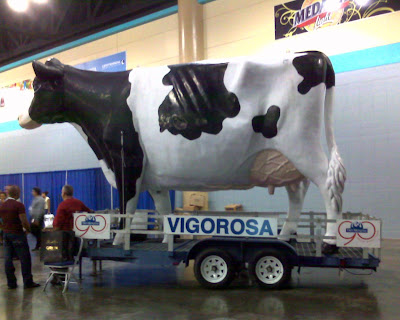
The world eats bread in hundreds of forms. Whether it is French, Italian, tortilla, khubz, bammy, or rainbow colored cereals, it is really just water and some type of flour, manipulated under the conditions and tastes at hand.
It would be an interesting history to study bread and energy. Does the shape of bread depend on the oven or fuel at hand? That question comes later.
It is time to work on skills for a very wet dough called ciabatta, or 'slipper' in Italian, obviously due to the dough's inability to hold any form other than flat...
This dough uses an additional 13% of water by weight of flour when compared to regular Italian or French bread. The net AR (Absorption Ratio) is 73% versus a nice, manageable 60%. The extra water allows for good gluten development, active fermentation, and an almost unmanageable, droopy dough.
Pre Treatment
The dough started with an 'enzyme' dough made from 60% AR with Amapola bread and pizza flour:
- 1kg Amapola Harina por Pan y Pizza
- 600 gm water
Leave this 12 hours at approximately 27C (the temperature of Puerto Rico)
Mixing
The next step is to build the pre-treatment to a 73% water percentage dough by calculating the total weight of flour we will use. In this case: 2500 grams.
- We already have 1000 gm, so add 1500 gm Amapola
- 73% water by weight equals 2500 x 0.73 = 1825 gm water
- We already have 600, so add 1225 gm water
- 8 gm yeast
- 15 gm Dominican honey
- 50 gm salt
Add flour and mix 3 min at 1st speed, then stop, shift to 2nd speed for 3 minutes to drive and develop gluten. The high amount of water precludes some mechanical coupling of energy common in thicker doughs. The dough will be very fluid, almost jelly like.
Rising
The small amount of yeast means three risings with intermediate knock downs to let the yeast grow. At each rising, the expansion of gas stretches glutens and ' strengthens' the dough slightly.
Freshly mixed:
At the first rising, the dough is less sticky. Knocking down is best accomplished by lifting the dough out of the 10-quart bowl and folding it over onto itself.
The second rising nearly fills the bowl:
And the 3rd is even higher after its hour...
Forming and Baking
This dough is not going to divide into nice little rolls. Most likely, the dough was turned out onto a floured peel, formed into a loose 'slipper' shape and slid onto the hot floor of the oven. After the final rising, the dough was not knocked down or degassed. Rather, it was laid onto a floured board and cut into 1425 gm splits. The splits were formed into loose 'slippers' and placed on lightly greased cookie sheets. Let rest 20 minutes.
Baking
Set oven to 225C. Due to high amount of water, the first bake was estimated at 40 minutes. This was too much and the final time was set to 32 minutes. Due to oven load, the pans were rotated top to bottom and front to back at 20 minutes.
Results and comments
The final results were very aromatic due to the amount of steam generated during baking. At 32 minutes bake time, the crust was golden hued, complex and nicely crunchy.
The crumb is very delicate and ideal for the panini press. However, the next attempt should try to divide these into smaller ciabatte for handling. Bread the size of a small boogie board is very hard to place in a freezer.
Explicit cumpanis September 1.


























